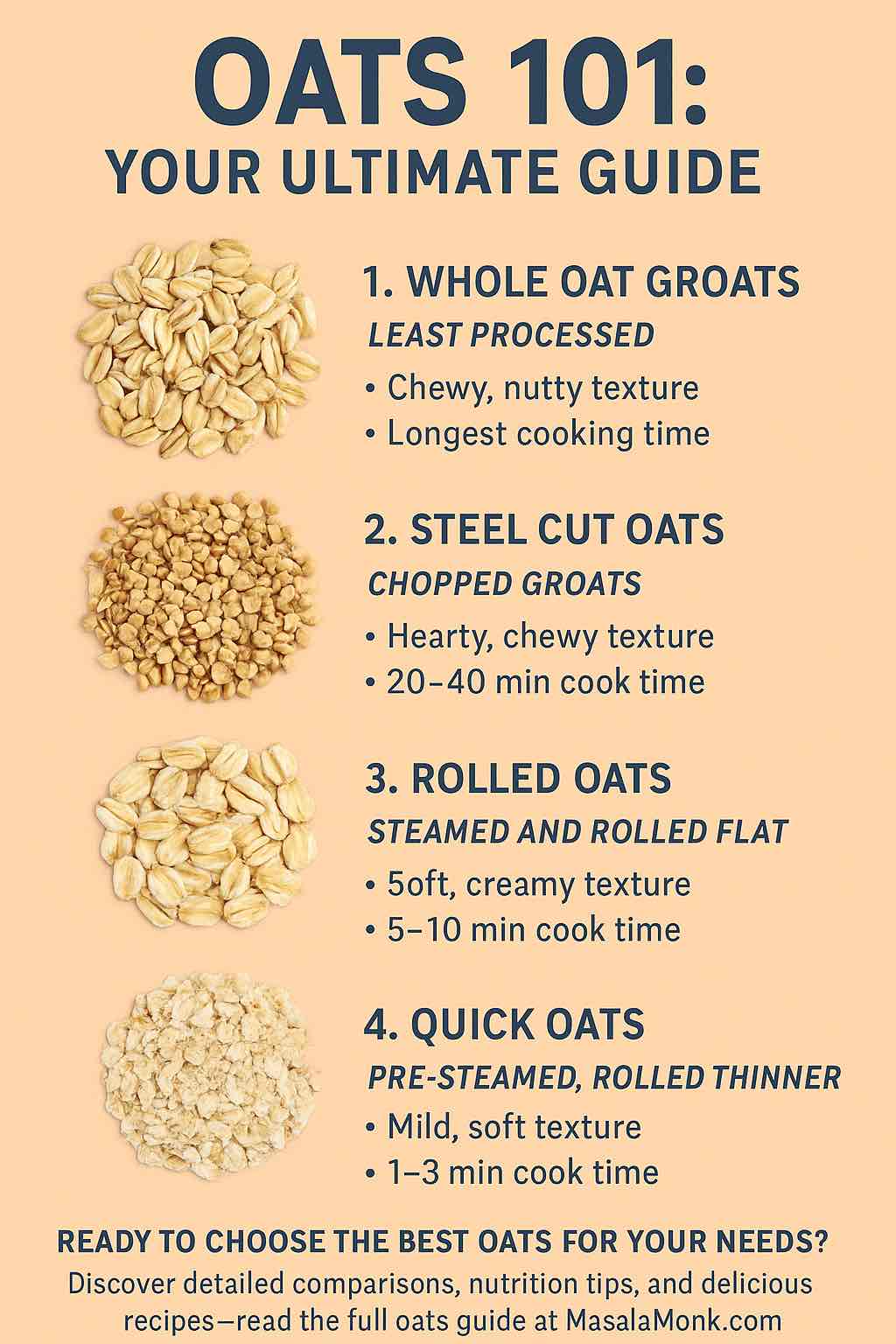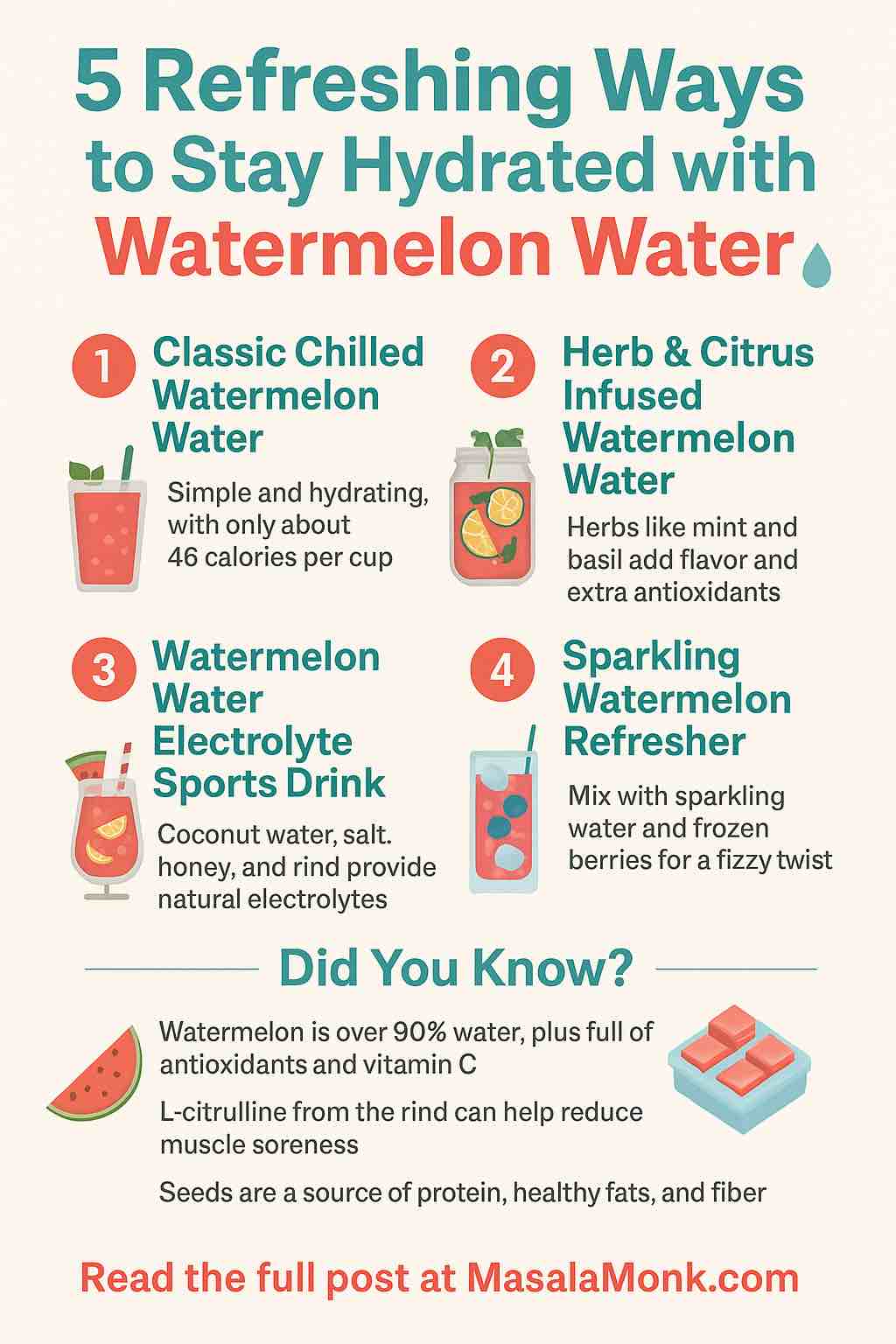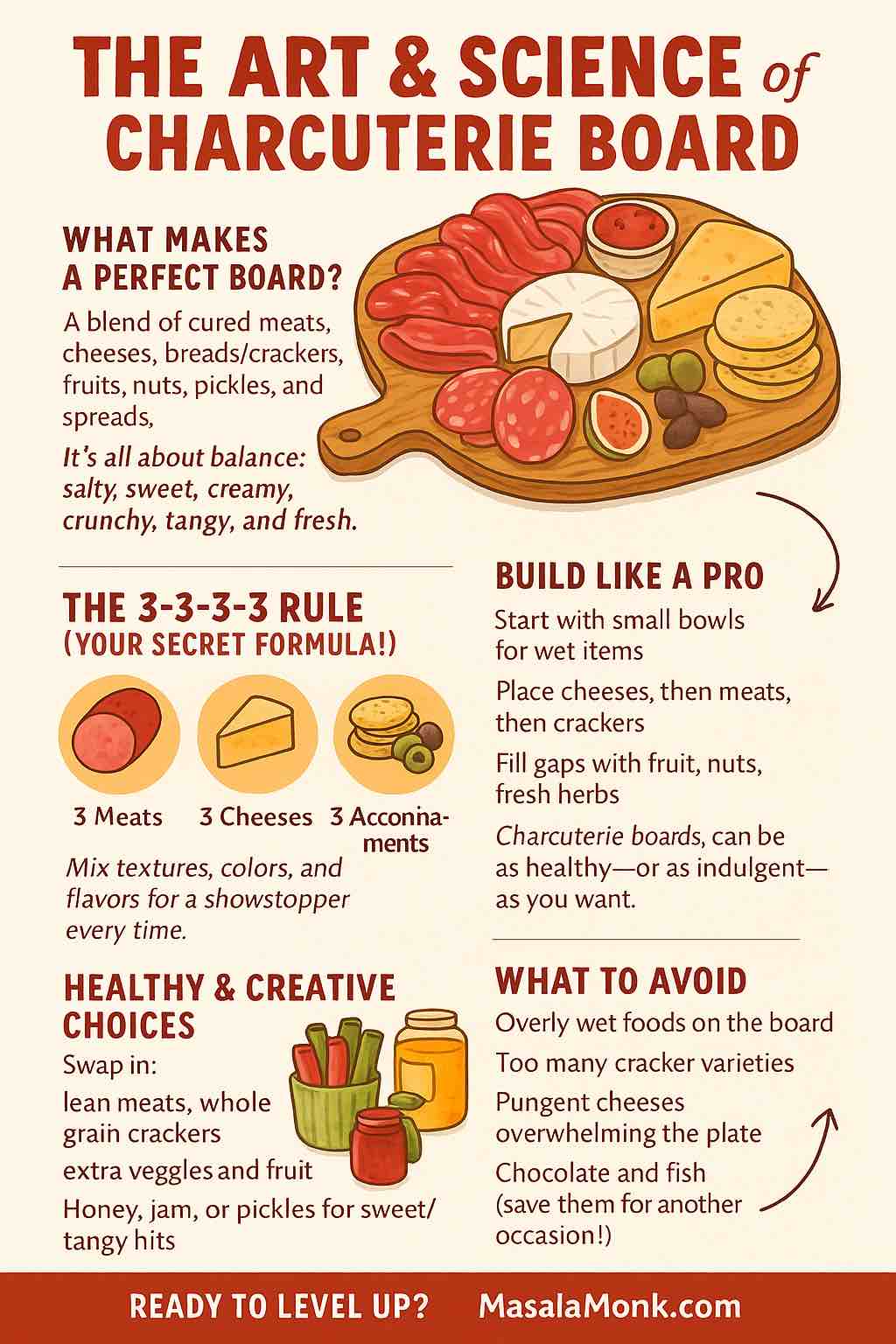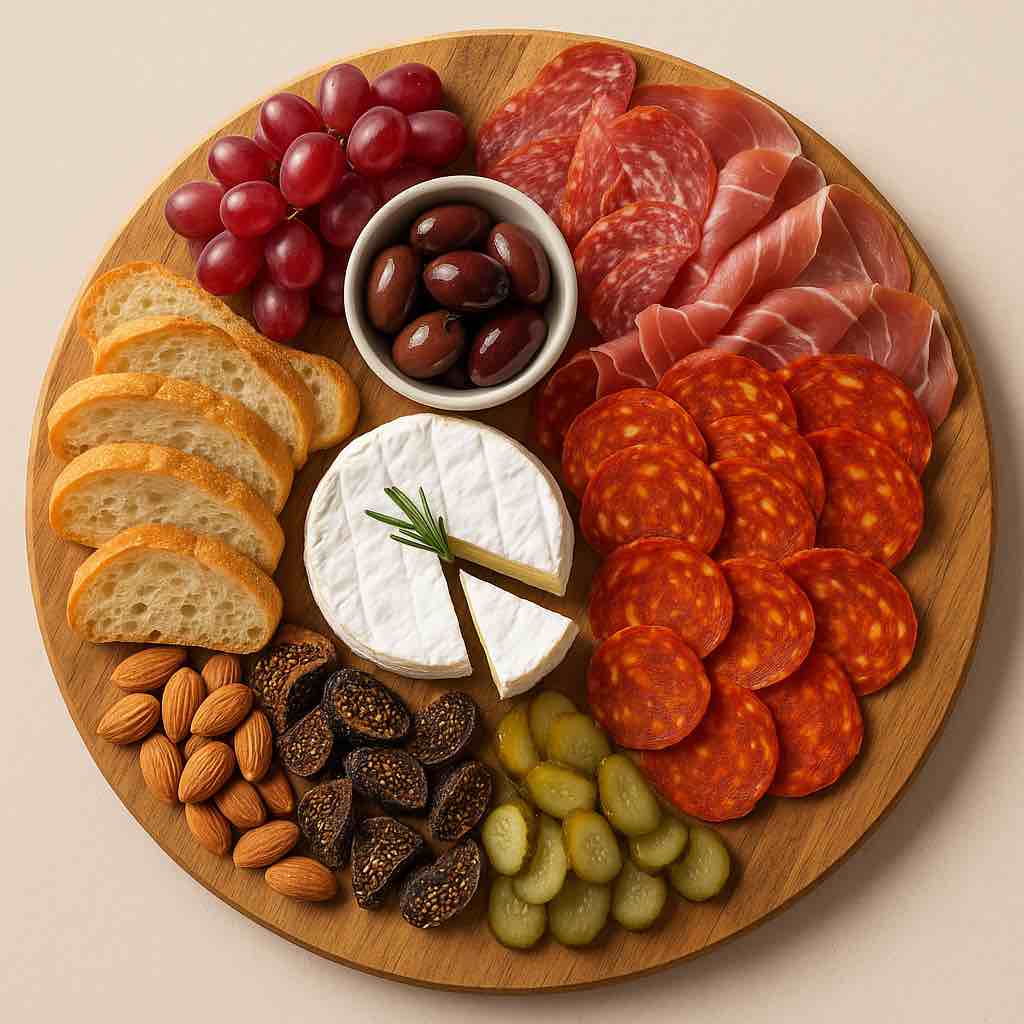
Oats are more than just a breakfast staple—they’re one of the most versatile, nutritious, and misunderstood whole grains you’ll find. Whether you call it oatmeal, porridge, or just “oats,” there’s a surprising amount of confusion around the types you see on supermarket shelves. Is there really a difference between rolled oats and old-fashioned oats? Are steel cut oats healthier than regular oats? What about quick oats, instant oats, or those porridge blends?
Let’s unravel the mystery, once and for all.
What Are Oats?
Oats are the edible seeds of the grass species Avena sativa. They’ve been a core part of traditional diets across the world for centuries—from hearty Scottish porridge to savory Indian oat upma and everything in between. At their core, all oat products start from the same whole oat “groat.”
Oats refers to the raw, unprocessed grain, while oatmeal is the name for a meal or porridge made from oats. However, in everyday use, the terms get mixed up—sometimes even on product labels.
Key Takeaway:
- Oats = the grain in all forms (raw, steel cut, rolled, quick, etc.)
- Oatmeal = any dish prepared from oats, typically boiled into a porridge.
Read more: Oats vs Oatmeal: What’s the Difference?
How Are Oats Processed? (From Field to Bowl)
The journey from oat field to your breakfast bowl involves several stages. All oat products begin with whole oat groats—the de-husked, cleaned oat kernel. From there, the differences come down to how the oats are cut, steamed, and rolled:
- Steel Cut Oats (a.k.a. Irish oats, pinhead oats):
- The groats are chopped into 2-4 pieces with steel blades.
- No rolling or flattening.
- Texture: Chunky, chewy, hearty.
- Rolled Oats (a.k.a. old-fashioned oats):
- Groats are steamed and then pressed flat by large rollers.
- Texture: Flaky, tender, with more bite than quick oats.
- Quick Oats:
- Start as rolled oats, then cut into smaller pieces and rolled even thinner.
- Texture: Soft, cook quickly, become mushy faster.
- Instant Oats:
- The most processed. Pre-cooked, dried, then rolled ultra-thin. Often found in single-serve packets, usually with added flavors or sugar.
- Texture: Creamiest, smoothest, “instant” porridge.
You might also see:
- Sprouted Oats: Oats are soaked, allowed to sprout, then processed as above. Supposedly easier to digest, with a slightly nuttier flavor.
- Porridge Oats: In the UK, this can refer to rolled oats or finely ground oats used for traditional porridge. Sometimes it’s a blend for extra creaminess.
Types of Oats: A Detailed Comparison
Let’s break down the differences and similarities in detail:
Steel Cut Oats
- Also Known As: Irish oats, pinhead oats.
- Processing: Whole oat groats chopped into pieces, not flattened.
- Texture: Chewy, nubby, and hearty. Retains a bite even after cooking.
- Flavor: Nutty and slightly sweet.
- Cooking Time: 20-40 minutes on the stovetop; can be made in a pressure cooker or slow cooker.
- Best For: Hearty porridge, overnight oats (with long soaking), savory oat bowls.
Fun Fact:
Steel cut oats are the closest to whole oat groats, meaning they take longest to digest and keep you full the longest.
Rolled Oats (Old-Fashioned Oats)
- Also Known As: Old-fashioned oats (the terms are interchangeable!).
- Processing: Groats are steamed to soften, then pressed flat into flakes.
- Texture: Flaky, soft, with a pleasant chew; less firm than steel cut but not mushy.
- Flavor: Mild and slightly sweet.
- Cooking Time: 5-10 minutes on the stovetop; also popular for overnight oats and baking.
- Best For: Classic oatmeal, overnight oats, cookies, muffins, granola, smoothies.
Tip:
If a recipe calls for “rolled oats” or “old-fashioned oats,” you can use either. They are exactly the same thing—just different names!
- More details: Can You Substitute Old-Fashioned Oats for Rolled Oats?
Quick Oats
- Processing: Rolled oats cut into smaller pieces and rolled even thinner.
- Texture: Cooks up soft, loses distinct flake structure, becomes mushy if overcooked.
- Flavor: Neutral; takes on flavor of add-ins.
- Cooking Time: 1-3 minutes—just add boiling water or microwave.
- Best For: Quick breakfasts, mixing into batters, no-bake bars.
Note:
Quick oats and instant oats are not exactly the same, but many people (and brands) use the terms interchangeably. See the deep dive:
Are Quick Oats the Same as Instant Oats?
Instant Oats
- Processing: Pre-cooked, dried, and rolled ultra-thin (often into a powdery texture).
- Texture: Silky and creamy, almost pudding-like.
- Flavor: Mild; often enhanced with added flavors, sugar, or salt in commercial packets.
- Cooking Time: Instant! Just add hot water or microwave for 1 minute.
- Best For: Emergency breakfasts, travel, kids, when you need food now.
Warning:
Check instant oat packets for added sugars and flavors. “Plain” versions are best if you want to avoid excess sugar.
Sprouted Oats
- Processing: Groats are soaked, allowed to sprout (germinate), then dried and rolled or cut.
- Texture/Flavor: Slightly nuttier, potentially easier to digest.
- Use: As you would rolled oats or steel cut oats.
Porridge Oats / Pinhead Oats
- Porridge Oats: In the UK and other countries, “porridge oats” might refer to rolled oats, sometimes ground for a creamier texture.
- Pinhead Oats: Another name for steel cut oats.
Oats vs Oatmeal: Clearing Up the Confusion
- Oats are the raw ingredient (groats, steel cut, rolled, quick, instant).
- Oatmeal refers to the dish made from oats (porridge) or, in some places, any processed oat product.
If you’re buying oats for a recipe, always check if it calls for a specific type, because texture and cooking time can change the final result!
More details: Oats vs Oatmeal: What’s the Difference?
How Do Oat Types Compare Nutritionally?
Let’s be clear: All oats are nutritious!
But, the processing can slightly change how your body digests them:
| Type | Calories | Fiber | Protein | Glycemic Index | Cook Time |
|---|---|---|---|---|---|
| Steel Cut | ~150 | ~4g | ~5g | ~52 | 20–40 min |
| Rolled/Old-Fash | ~150 | ~4g | ~5g | ~59 | 5–10 min |
| Quick Oats | ~150 | ~4g | ~5g | ~66 | 1–3 min |
| Instant Oats | ~150 | ~4g | ~5g | 75+ | 1 min |
Key points:
- The macro nutrition (calories, protein, fiber) is nearly identical between all unsweetened oat types.
- Steel cut oats are digested a bit more slowly, leading to a lower glycemic index and possibly longer-lasting energy.
- Rolled oats strike a balance: faster to cook than steel cut, more texture than quick or instant.
- Quick and instant oats digest faster, raising blood sugar more quickly—especially if sugar is added.
For people watching blood sugar:
Choose steel cut or rolled oats.
For convenience? Quick or instant is fine (just watch for extra sugar!).
Key Vitamins and Minerals in Oats (all types, per 40g dry serving):
While the macros (calories, protein, fiber) are very similar across all oat types, the micronutrient (vitamin and mineral) content is also quite consistent, because the different forms (steel cut, rolled, quick, instant) all start from the same whole grain. Minor losses in B-vitamins can occur with additional processing, but for most people, the differences are negligible.
- Manganese: 70–90% Daily Value (DV)
- Phosphorus: 20–30% DV
- Magnesium: 15–20% DV
- Iron: 8–10% DV
- Zinc: 10–15% DV
- Copper: 15–20% DV
- Vitamin B1 (Thiamin): 10–15% DV
- Folate: 5–8% DV
- Selenium: 15–20% DV
Oats also contain:
- Small amounts of potassium, calcium, and B5 (pantothenic acid)
- The powerful antioxidant avenanthramides (unique to oats)
Does Processing Change the Mineral Content?
- Steel cut, rolled, and quick oats:
Very similar micronutrient profiles, as the oat bran and germ are retained. - Instant oats:
Slightly lower levels of some B-vitamins due to extra steaming and pre-cooking, but still a rich source of minerals compared to most cereals.
Main concern is usually added sugar/salt in flavored packets—not loss of minerals.
How Do Oats Support Health?
- Manganese, phosphorus, and magnesium: For energy metabolism, bone health, and nerve function.
- Iron and zinc: For immune support and oxygen transport.
- Beta-glucan fiber: Supports cholesterol reduction, heart health, and gut microbiome.
- Antioxidants (avenanthramides): Anti-inflammatory, may help lower blood pressure.
Bottom Line
- Oats of all types are nutrient-dense, especially for minerals and certain B vitamins.
- Choose plain, unsweetened varieties for maximum health benefit.
- Processing for quick or instant oats may reduce B-vitamins slightly, but minerals remain high.
Cooking With Different Oat Types
Steel Cut Oats:
- Use for a hearty, chewy porridge.
- Great in savory oat “risottos” or grain bowls.
- Overnight soak or pressure cook to save time.
Rolled/Old-Fashioned Oats:
- Perfect for traditional oatmeal, overnight oats, and muesli.
- Use in baking: cookies, muffins, breads, pancakes.
- Make homemade granola or snack bars.
Quick Oats:
- Great for instant breakfast or to thicken smoothies.
- Use in batters (pancakes, muffins) for softer texture.
- Not ideal for recipes where you want oat texture to stand out.
Instant Oats:
- Best for emergencies, travel, or super-fast prep.
- Often sweetened—use plain, then add your own toppings for a healthier bowl.
Can You Substitute One Oat for Another?
- Rolled oats ↔ Old-fashioned oats: YES, always!
- Rolled/old-fashioned ↔ Quick oats: Usually yes, but final texture will be softer/mushier.
- Rolled/quick ↔ Steel cut: Not directly. Steel cut oats require more liquid, longer cooking, and have a totally different texture.
- Instant oats ↔ Any other: Not a good swap for most recipes, as they dissolve or get mushy quickly.
Tip:
When baking, always use the type of oat called for in the recipe—especially for cookies or granola, where texture is key.
Why Choose One Oat Type Over Another?
- Steel cut oats for chew, hearty texture, slow digestion.
- Rolled oats for versatility, classic oatmeal, baking.
- Quick oats for speed and convenience.
- Instant oats for emergencies or travel.
- Sprouted oats for those who want easier digestion or a slightly different flavor.
Final Thoughts: Which Oats Are Best?
There’s no single “best” oat for everyone. It depends on your:
- Time: Steel cut for slow mornings, quick or instant for busy days.
- Texture: Chewy (steel cut), soft but still textured (rolled), or creamy (quick/instant).
- Nutrition: All are healthy, just be mindful of instant oat ingredients.
The bottom line? All oats are good oats.
Pick the type that fits your taste, recipe, and schedule best!
Ready to Go Deeper? Explore These Detailed Guides:
- Steel Cut Oats vs Rolled Oats: Nutrition, Taste, Cooking & More
- Are Quick Oats the Same as Instant Oats?
- Can You Substitute Old-Fashioned Oats for Rolled Oats?
- Oats vs Oatmeal: What’s the Difference?
Do you have a favorite way to use oats? Share your tips and questions in the comments below!
10 FAQs About Oats
1. Are steel cut oats healthier than rolled oats?
Steel cut and rolled oats have almost identical nutrition—same calories, fiber, and protein. Steel cut oats have a slightly lower glycemic index and digest more slowly, which may help you feel full longer.
2. Can I substitute rolled oats for old-fashioned oats in recipes?
Yes! Rolled oats and old-fashioned oats are the same product, just two names. Use them interchangeably in any recipe.
3. Are quick oats and instant oats the same thing?
Not exactly. Quick oats are cut and rolled thinner to cook in 1–3 minutes. Instant oats are pre-cooked, dried, and rolled ultra-thin for “just add water” convenience. Instant oats often have added sugar or flavors.
4. Which type of oats is best for overnight oats?
Rolled (old-fashioned) oats work best for overnight oats, providing the right texture after soaking. Steel cut oats will be too chewy unless pre-cooked or soaked very long; quick oats become mushy.
5. Is there a big difference in calories or protein between oat types?
No. Steel cut, rolled, quick, and instant oats (plain, unsweetened) all have nearly the same calories, protein, and fiber per serving.
6. Why do steel cut oats take longer to cook?
Steel cut oats are just chopped, not rolled or steamed. Their thicker, denser shape takes more time and liquid to soften fully.
7. What are porridge oats?
In the UK and some other countries, “porridge oats” typically means rolled oats or a blend of rolled and ground oats for a creamy texture.
8. Can I use instant oats in baking recipes?
Not recommended. Instant oats tend to dissolve and make baked goods mushy. Use rolled or quick oats for better texture in cookies, muffins, and bars.
9. Are flavored instant oat packets healthy?
Many instant oat packets contain added sugars, salt, and artificial flavors. Choose plain instant oats and add your own healthy toppings for a better option.
10. Do oats contain gluten?
Oats are naturally gluten-free, but are often processed in facilities that also handle wheat. If you need gluten-free oats, look for oats specifically labeled “gluten-free.”














